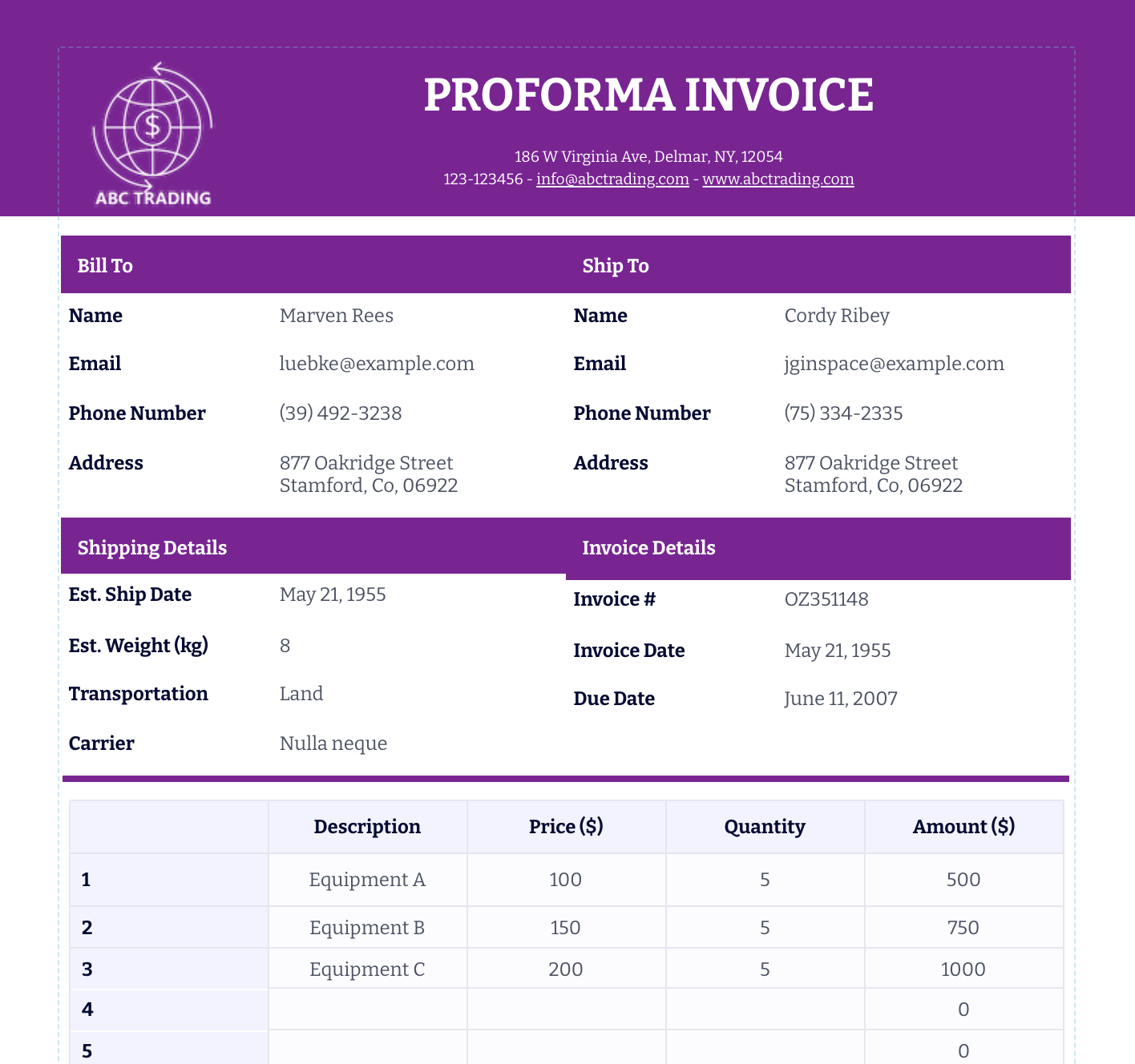You can never underestimate the power of being on the same page with others — especially when you’re a project manager overseeing a budget or a business owner charging for goods and services.
Miscommunication between you and your clients, especially when it comes to money, sometimes stems from confusion, leading to wasted time and the loss of business.
This is where learning how to create pro forma invoices comes in handy. The words “pro forma” are Latin for “for form’s sake,” indicating a formality or courtesy. But their usefulness goes well beyond their definition — particularly when it comes to handling budget concerns with clients.
What is a pro forma invoice?
When you and a buyer agree to a transaction, you may still want to make sure you both understand what you’ll exchange before legally committing. Unlike a traditional invoice, pro forma invoices don’t legally ask buyers for payment. Think of them as a precursor to a sales invoice — a formal quote that details the cost of services and goods you’re providing the buyer.
When you show buyers what they’re purchasing and for what price — before payment is due — both of you have time to address any discrepancies. If something isn’t right, the buyer and seller can adjust if necessary or back out of the deal.
For example, a buyer may have initially believed they’d get a discount on multiple orders of the same product, or a seller may assume the buyer’s shipping address is the same as the billing address.
When you create a pro forma invoice, you put a promise from seller to buyer in writing — an extra but necessary step that sets expectations and reduces potential problems later on.
A variety of businesses use these invoices — they’re especially important in e-commerce and international trade. The U.S. Customs and Border Protection agency actually requires them to process imported goods when a commercial invoice isn’t available.
But business and management professionals in any industry where goods and services are exchanged can benefit from learning how to create them.
How to create pro forma invoices
To create a pro forma invoice that’s useful for you and your clients, use a simple invoice template from a word processor or spreadsheet program. Customize the template to include the following details:
- Indication of the type of invoice. Include the words “pro forma invoice.” It’s a small but essential step to differentiate it from another type of invoice or bill.
- Contact information. List the address, phone number, and email address of your business and the buyer.
- Item or service description. Make the descriptions thorough so everyone knows what’s included in the order. Double-check that you have the correct number of duplicate items, if applicable.
- Price of each item or service. Break down how much each item will cost. Don’t forget to add any fees, taxes, discounts, and shipping costs.
- Total cost. Don’t forget this part — it’s the number that matters most to your buyer!
- Payment method. Specify if the buyer will use a credit card, check, or online payment system.
- Important dates. To keep everyone on the same timeline, include the date you sent the invoice and the date you expect to deliver the services.
- Shipping information. When the transaction involves physical goods, you should note the shipping address on the pro forma invoice, especially if it differs from the buyer’s location. You can also add the carrier and the expected weight of the shipment.
- Invoice details. Don’t forget an invoice number or other tracking marker to keep your internal communications organized.
- Signature. Your signature verifies the invoice and shows that you approve of the numbers. Include a statement saying that, to your knowledge, the information is correct.
- Terms and conditions. People often joke about the fine print, but it’s no laughing matter in business. Detail any terms and conditions of the sale if needed.
How to create pro forma invoices: The easy way
Learning how to create pro forma invoices requires paying attention to certain details — details that a Jotform template can take care of while you turn your attention to other critical business matters.
With Jotform’s pro forma invoice template, you don’t have to worry about remembering all the details you need to include. You don’t even have to spend time coming up with your own invoice design. You can customize a template to include your business logo, adding visual polish and an elevated sense of professionalism that will impress your buyers.
Jotform’s templates are easy to fill out and use. What’s more, they include widgets that generate invoice numbers and do the math for you. When you’re done, you can print them out to send hard copies or email them, simplifying the invoicing process for both you and your customers.


































Send Comment:
1 Comments:
More than a year ago
Hey, thanks for sharing this blog. You can also try Moon Invoice for creating Proforma invoices.